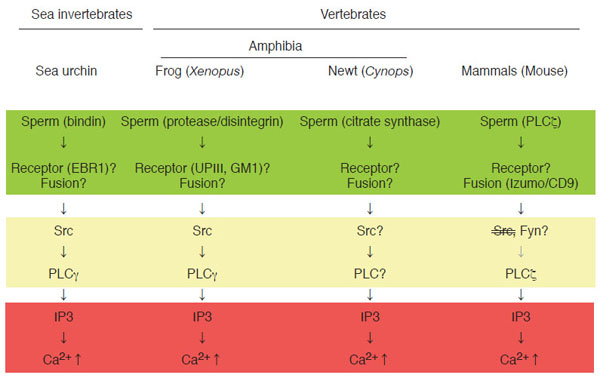Fig. (1) Signal transduction leading to Ca2+transient at fertilization in sea urchin, Xenopus laevis (frog), Cynops pyrrhogaster (newt), and mouse. Shown schematically is sequence of events at fertilization in four model organisms (sea urchin as representative of sea invertebrates, frog and newt as representative of amphibian vertebrates, and mouse as representative of mammalian vertebrates). In all species, IP3-dependent mechanism is a dominant component of intracellular Ca2+ release (as highlighted in red), which is necessary for successful egg activation by sperm. In most species, molecular detail of sperm-egg membrane interaction and fusion is unknown and may be varied between species (as highlighted in green). Special note that genetic approach has identified sperm Izumo and egg CD9 as essential components for sperm-egg fusion. Egg cytoplasmic events connecting sperm-egg interaction/fusion and IP3-dependent Ca2+ release are semi-conserved among species and involve tyrosine kinase-dependent or-independent actions of PLCs (as highlighted in yellow)


